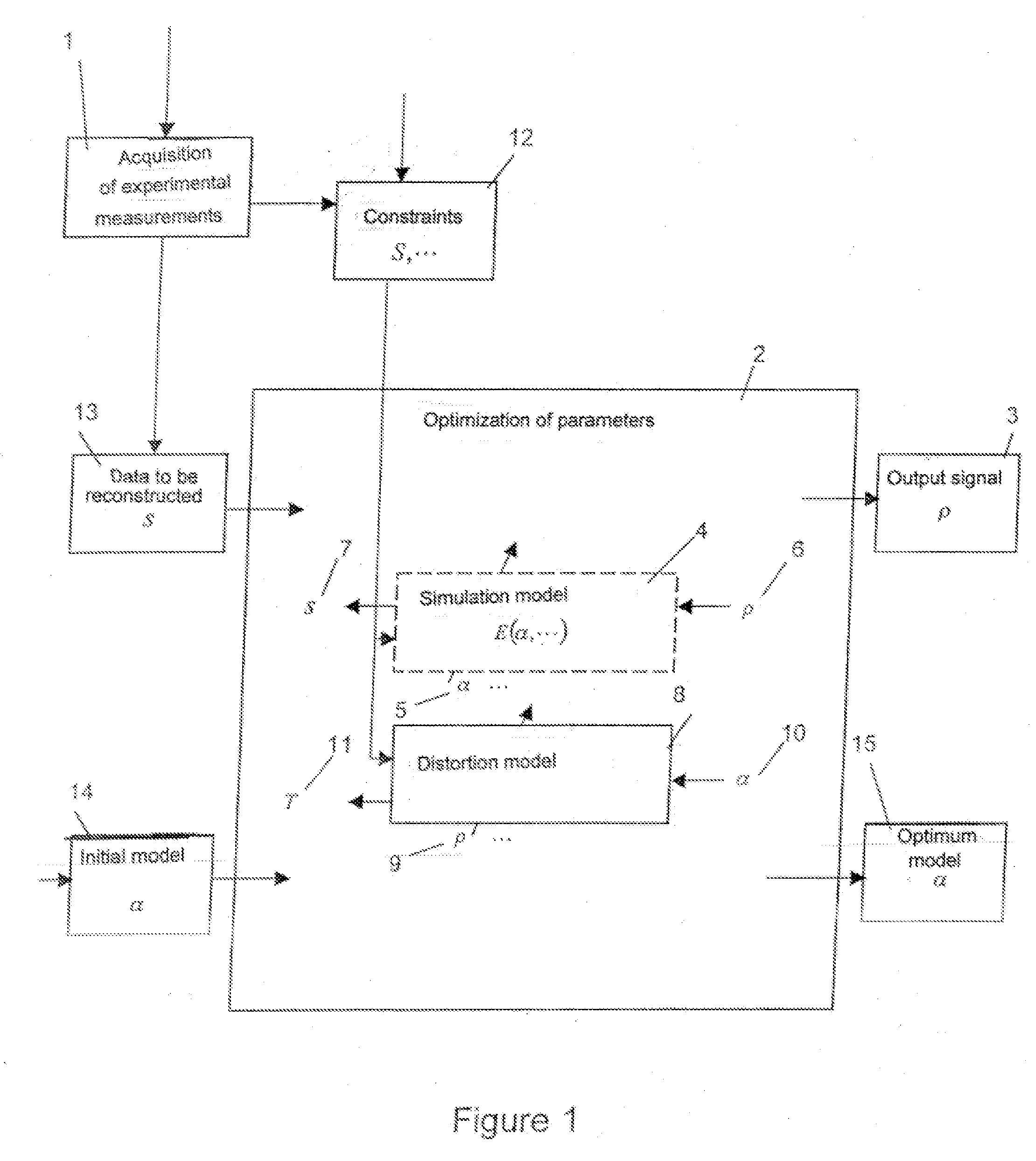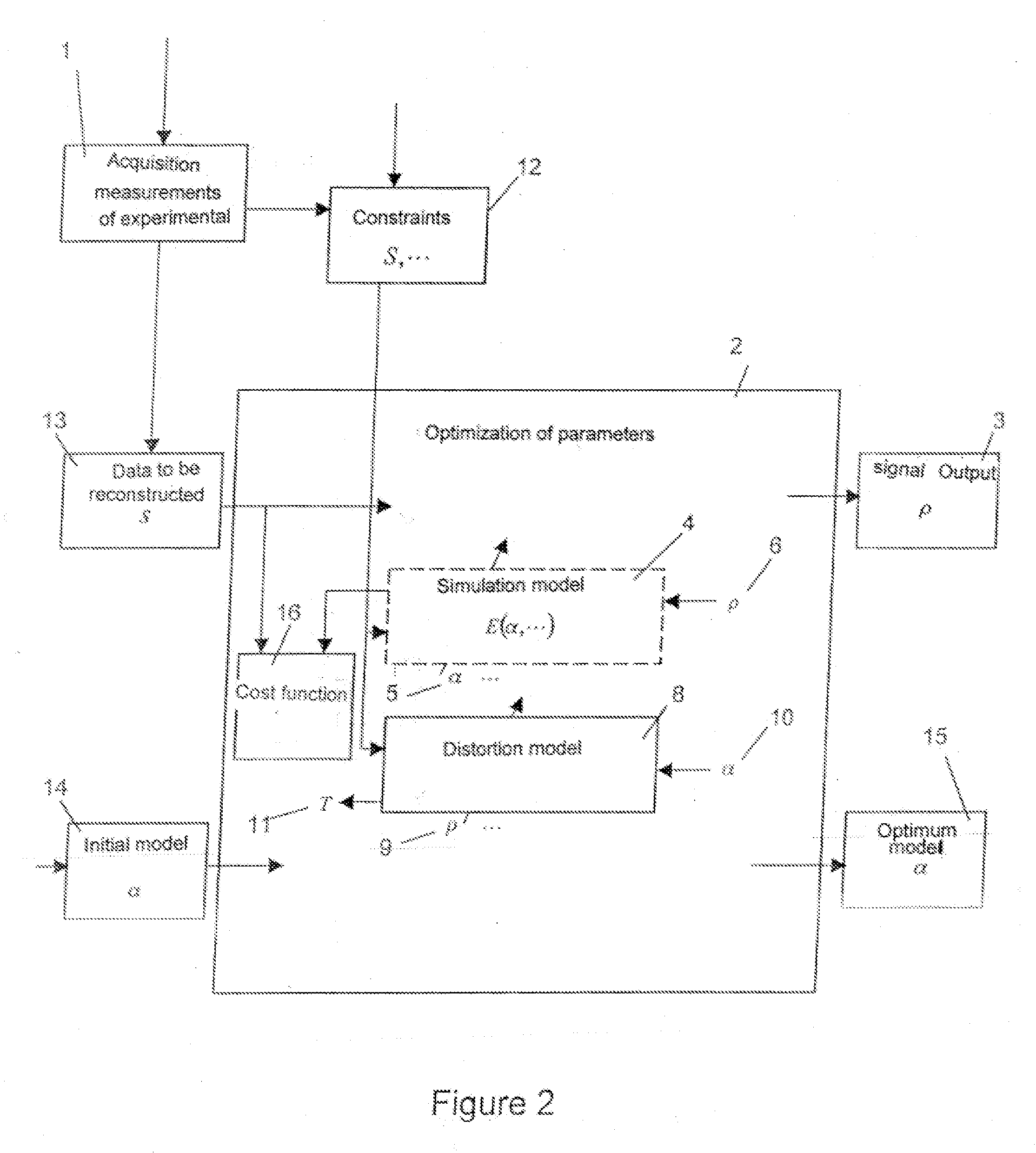Method for reconstructing a signal from distorted experimental measurements and device for its implementation
a signal and experimental measurement technology, applied in the field of magnetic resonance, can solve the problems of affecting the image quality of the image,
- Summary
- Abstract
- Description
- Claims
- Application Information
AI Technical Summary
Benefits of technology
Problems solved by technology
Method used
Image
Examples
Embodiment Construction
[0137]FIG. 1 represents a generalized reconstruction method using inversion of coupled systems (GRICS) with coupled simulation and distortion models, in accordance with the present invention.
[0138]A method for acquiring distorted experimental measurements and a mono- or multi-dimensional reconstruction of a point signal capable of vary during the acquisition of the experimental measurements, in accordance with the present invention, can be illustrated by a method of parallel MRI acquisition (1) distorted by a motion of the imaged subject and the reconstruction (2) of a stack of images ρ (3) illustrated in FIG. 1.
[0139]It is understood that this illustration is particular embodiment of the invention, and that any other type of generalized reconstruction by inversion of coupled systems (GRICS) would be possible.
[0140]Moreover, this method makes it possible to dispense with the initial calibration step of the model describing the physiological patient motion.
[0141]This method is also i...
PUM
 Login to View More
Login to View More Abstract
Description
Claims
Application Information
 Login to View More
Login to View More - R&D
- Intellectual Property
- Life Sciences
- Materials
- Tech Scout
- Unparalleled Data Quality
- Higher Quality Content
- 60% Fewer Hallucinations
Browse by: Latest US Patents, China's latest patents, Technical Efficacy Thesaurus, Application Domain, Technology Topic, Popular Technical Reports.
© 2025 PatSnap. All rights reserved.Legal|Privacy policy|Modern Slavery Act Transparency Statement|Sitemap|About US| Contact US: help@patsnap.com



